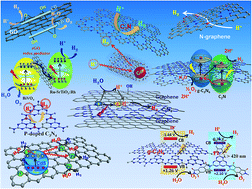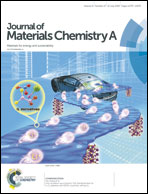Sunlight-driven water-splitting using two-dimensional carbon based semiconductors
Abstract
The overwhelming challenge of depleting fossil fuels and anthropogenic carbon emissions has driven research into alternative clean sources of energy. To achieve the goal of a carbon neutral economy, the harvesting of sunlight by using photocatalysts to split water into hydrogen and oxygen is an expedient approach to fulfill the energy demand in a sustainable way along with reducing the emission of greenhouse gases. Even though the past few decades have witnessed intensive research into inorganic semiconductor photocatalysts, their quantum efficiencies for hydrogen production from visible photons remain too low for the large scale deployment of this technology. Visible light absorption and efficient charge separation are two key necessary conditions for achieving the scalable production of hydrogen from water. Two-dimensional carbon based nanoscale materials such as graphene oxide, reduced graphene oxide, carbon nitride, modified 2D carbon frameworks and their composites have emerged as potential photocatalysts due to their astonishing properties such as superior charge transport, tunable energy levels and bandgaps, visible light absorption, high surface area, easy processability, quantum confinement effects, and high photocatalytic quantum yields. The feasibility of structural and chemical modification to optimize visible light absorption and charge separation makes carbonaceous semiconductors promising candidates to convert solar energy into chemical energy. In the present review, we have summarized the recent advances in 2D carbonaceous photocatalysts with respect to physicochemical and photochemical tuning for solar light mediated hydrogen evolution.

- This article is part of the themed collection: Recent Review Articles


 Please wait while we load your content...
Please wait while we load your content...